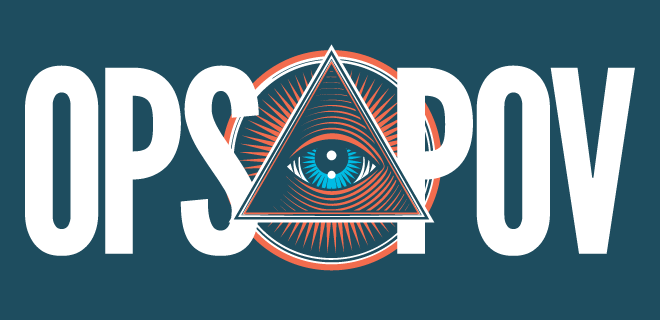
Identity solutions are one of the most prevalent new techniques for collecting first-party data, especially in a privacy-centric world.
Regardless of Chrome delaying its third-party cookie cut-off, other browsers do not support cookies. It is essential that publishers and advertisers find ways to collect user data that does not cross the line of consumer ethics. While there are many alternative IDs to choose from, most industry experts suggest you find the one that works specifically for your brand.
To get an in-depth understanding of one of the major alternative IDs, we spoke with Mathieu Roche, co-founder and CEO of ID5. Known as the privacy-focused identity solution, it creates an encrypted first-party data ID that gives publishers a unique device ID they can share with their partners and clients.
Wondering if this can work for your business?
The Q&A below touches on the process of creating ID5, how they were able to make a privacy-focused solution, how it works in practical situations and more.
Andrew Byrd: Can you tell me about the process of creating ID5? 
Mathieu Roche: My co-founders and I were in ad tech before we decided to create this company. We knew the industry and the limitations of using cookies. We understood the frustration clients, brands and publishers were having to leverage a very imperfect method to identify customers into addressable advertising.
We saw an opportunity to do better. In addition, being based in Europe, we saw the evolution of privacy regulations and the concerns on the customer side. We knew that what we’re using today: cookies and mobile IDs are not going to cut it.
A couple of years later, Google started talking about removing cookies in Chrome. Obviously, Safari was already there. Eventually, the market caught up with us and our view of building alternative identities, but the initial trigger was efficiency. A lot of money goes to the walled gardens because they have better ways to identify customers and premium publishers. We need to have an open web that works and have advertising as a business model that can be sustainable. That’s how we looked at the problem in the beginning.
AB: How does the technology work?
MR: In terms of technology, we’re very focused on building identification capabilities. We provide a stable identifier for people who do audience targeting, frequency capping and measurement to use at greater scale and fidelity. We’re an infrastructure for ad tech and MarTech to build on top of and our role is to create identifiers.
Right now identifiers are stored in third-party cookies on the web or in operating systems in mobile applications, so it’s really provided by the device. What we’re doing is building an alternative method to have a device identifier.
We’re using first-party cookies or equivalent systems and connecting those first-party IDs across sites, devices and apps to make them consistent. It’s the same thing we’re doing with cookies and MAIDS, but in a way that is more future-proof and more controllable from a privacy and data protection standpoint.
AB: Providing actionable identifiers is one of the major tenets of your business. How does this help publishers to monetize their assets and audiences?
MR: I talked to a publisher this morning and they told me they had a $20 million business on Safari before they removed third-party cookies. As a result of that removal, their business went down to $5 million. That’s what publishers are seeing when there is no identification capability.
Buyers become less interested when they don’t know who they’re going to reach because they don’t know how to measure the performance of that investment. So as a result, they are not ready to pay top dollars anymore. They become blind as buyers.
Buyers are not going to invest as much money because they can’t control, optimize or measure that investment. That’s the consequence of third-party cookies or removing identification. When there is no identification phase, inventory is worse.
As a consequence, publishers are really suffering in terms of their ability to make money. Unless we find a replacement solution like ID5, It’s going to be an economic challenge for publishers to support free access to content and services if the value of advertising is dropped. That’s really what’s at stake here. We’re trying to maintain that balance of using data so that advertising works and building data protection mechanisms that ensure compliance with regulations. We need to rebuild that trust with consumers and find a balance between advertising and data.
AB: Compliance with privacy regulations is one of the major reasons alternative IDs were created. ID5’s technology is known to be privacy-focused by design. Can you tell me why that is the case?
MR: Privacy regulations, whether you are talking about the GDPR or the CPRA, are based on two fundamental principles: transparency, you have to say what you do with people’s data, and control, you give consumers a choice to opt-in or opt-out.
Transparency and control are the pillars of data protection globally. Within the ID5 infrastructure, we enforce those pillars. Every publisher or brand that we work with has to disclose to their consumers that they work with us. It’s a mandatory requirement in our contracts that you have to put a paragraph in your privacy policy that says ID five is going to create an ID for you.
We enforce control by giving the consumer opt-in or opt-out capabilities. We take those signals into account. When a user says yes, we give an ID. When he says no, we don’t give an ID. This is baked into the structure of the product that we’re selling to our clients. That is why ID5 is privacy-focused by design.
AB:I saw an article where you worked with Gusbourne Wines to help expand their audience reach. Can you tell me about that experience and other clients you’ve worked with that have used ID5? What have been the responses to the practical use of the product?
MR: We’re enabling brands to reach more of their customers. Using cookies and MAIDS, they only see about half of their clients. The other half is invisible because they don’t have cookies.
We open up that invisible part of the world and make it visible, addressable and measurable. Gusbourne Wines has benefited from it as a result of being able to reach a lot more of their prospective clients. It has translated into better campaign performance and better reach. It also helped them to reach environments that are slightly cheaper to buy inventory on because there’s less competition when you’re using a Safari browser.
As a result, they’re seeing a higher reach about 2x their former capabilities. They’re able to target a million people now. There’s about 20 to 30% lower cost of acquisition and media in general. That’s what we’re seeing with Gusbourne Wines. That’s what we saw with other clients such as IBM and Baiada in Australia. We’re starting to have more and more of those cases where people see a bigger reach and smaller cost of acquisition.